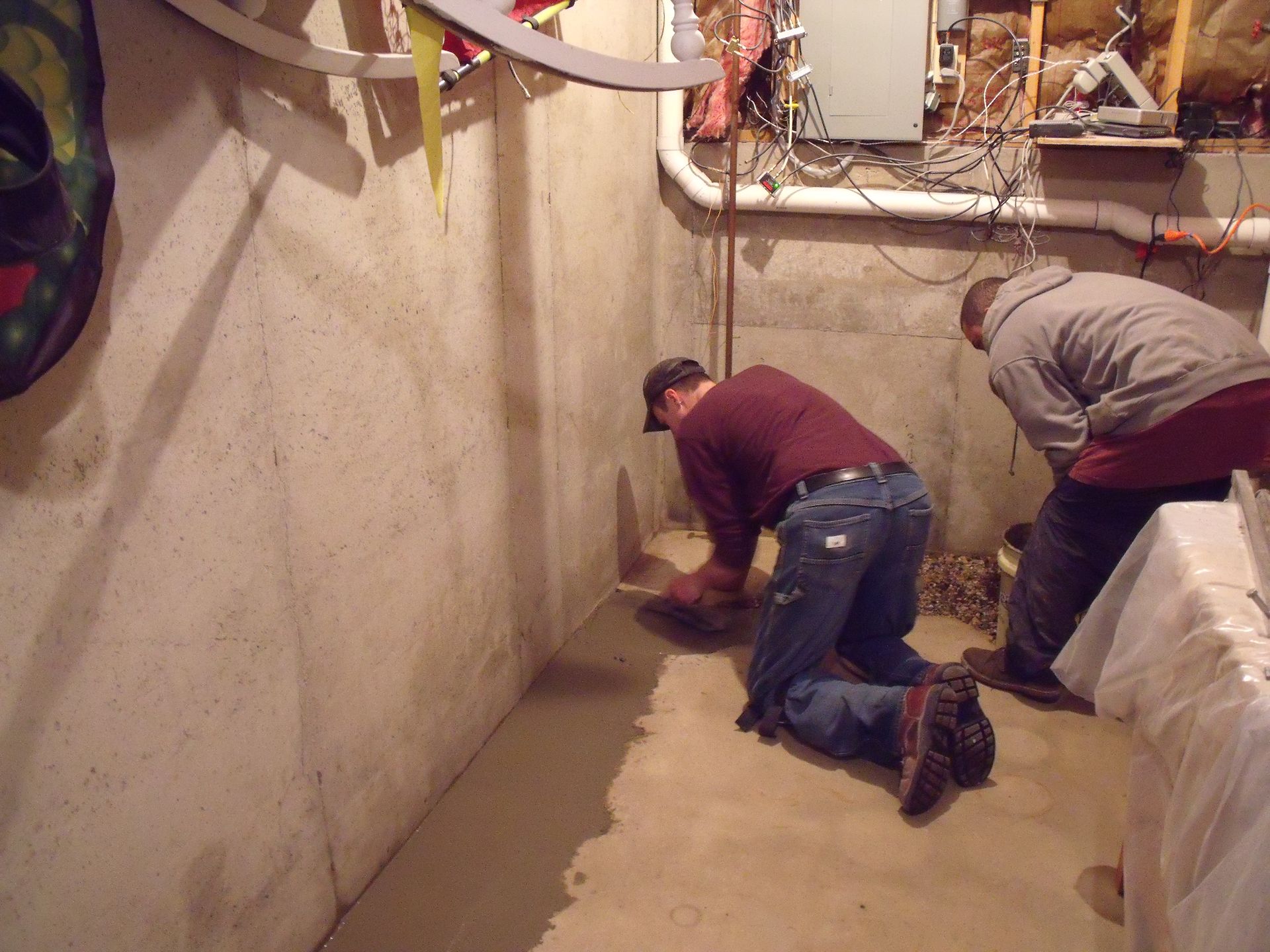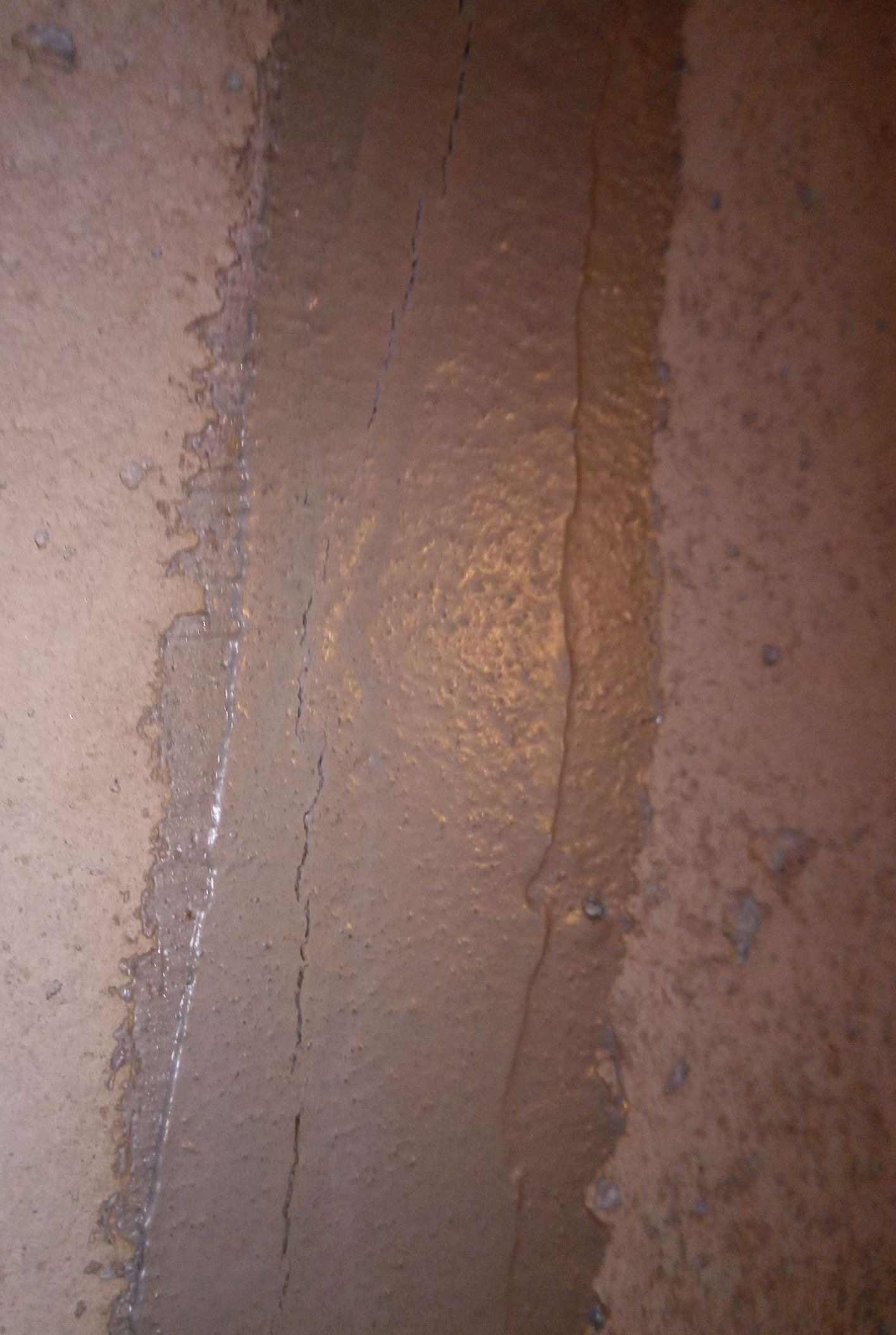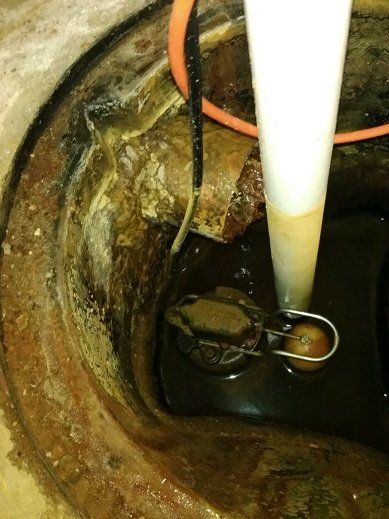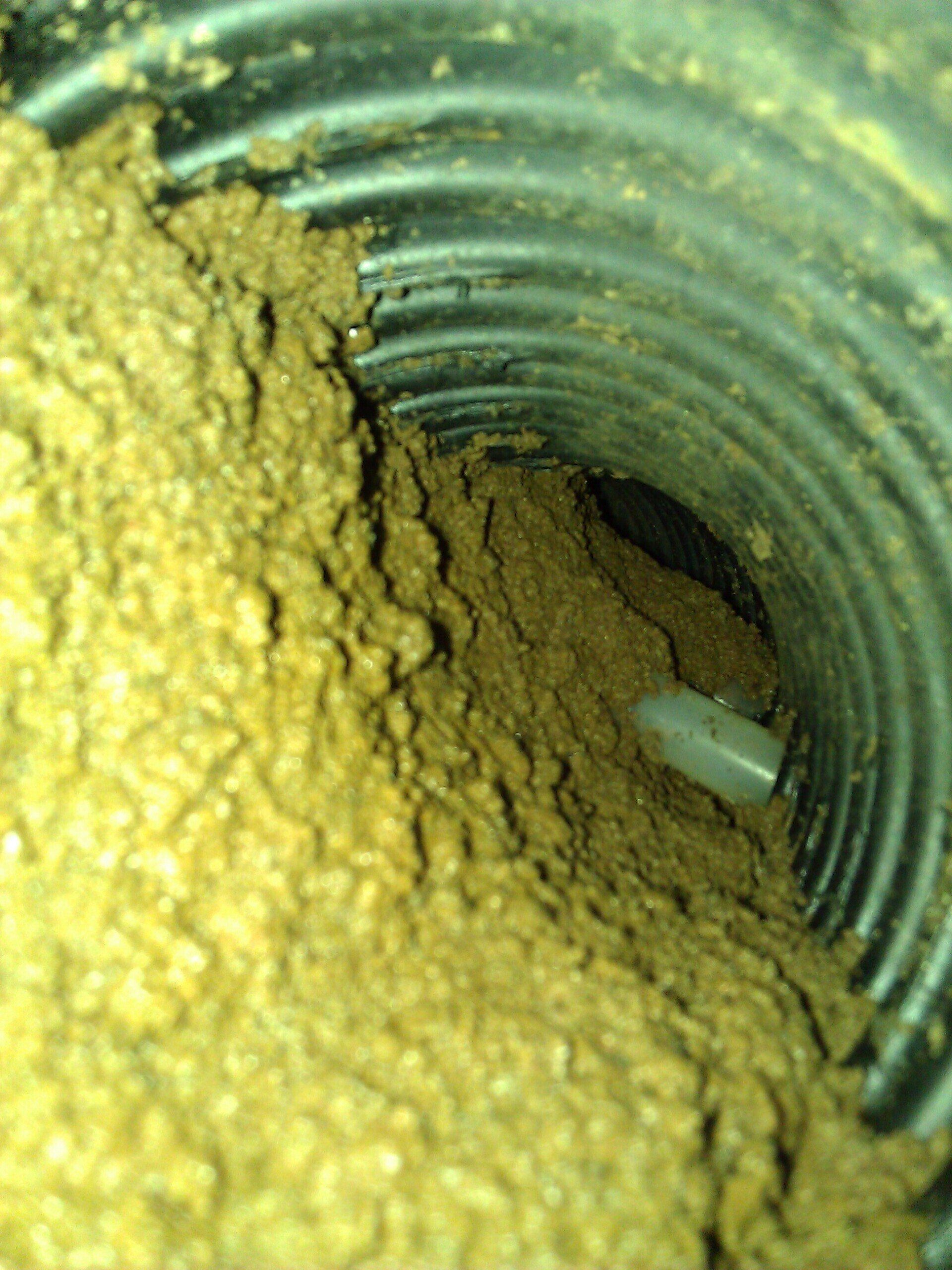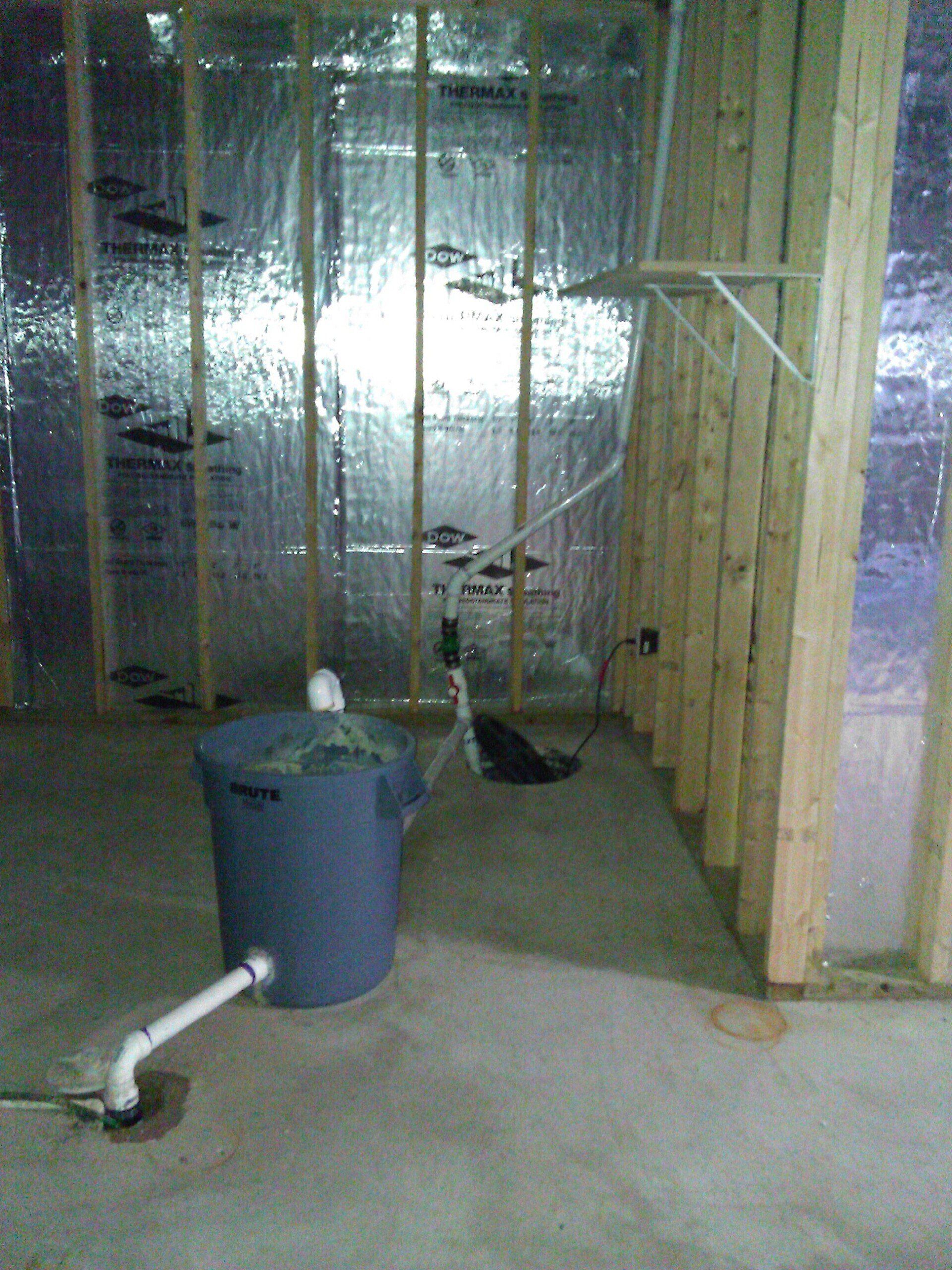About 60% of the homes we work on have a drain tile system installed. It's either bone-dry or running all of the time and the home is still having moisture issues.
This is the inside of a drain tile pipe where it drains into a sump basket to be pumped back out into the yard. When the water moves through your wall, it also brings in dirt and sand which can clog the pipes or destroy the pump. This system would need extensive work to fix the pipe system and would only add time until the system needs to be "fixed" again. Have you ever wondered why the sidewalk next to your home is sloping towards the house? The base is "washing" away creating voids and a sinking sidewalk or steps.
Choosing exterior Real Waterproofing stops water before it can enter your home, it keeps the dirt and sand outside where it should be.



